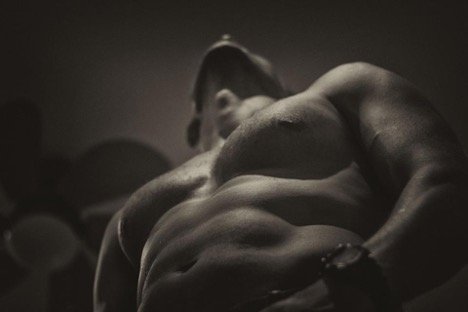All men have breasts; Breast tissue, that is. Often the tissues never grow, which is why our chests remain flat.
However, ageing, hormone changes, medication, and just plain old genetics can all cause our chests to expand, causing what is medically known as gynecomastia.
Gynecomastia, more commonly referred to by the unflattering name ‘man boobs’ or ‘moobs,’ is prevalent in men of all ages and sizes. It’s often an embarrassing topic for men, as the idea of having “boobs” can feel emasculating and cause turmoil to our mental health. Because of this, gynecomastia treatment is an increasingly performed types of breast augmentation.
At least 30% of men deal with gynecomastia at some point in their life, and nearly 20,000 gynecomastia surgeries were performed in 2020 alone.
Summer activities such as swimming or the beach can be ruined when you feel like everybody is staring. When it comes to the bedroom, feeling self-conscious about your body during sex can kill your mood.
Causes
It’s important to know that having gynecomastia doesn’t make you any less of a man, and demystifying the cause can help decrease the stigmatization of these feelings. Let’s start with some of the common causes.
- Rapid hormone changes during teenage puberty
- Andropause or “Male Menopause” in our 40’s and 50’s causes loss of testosterone and fat redistribution.
- Certain medications and antibiotics
- Thyroid issues
- Kidney and liver disease
- Steroids
- Excessive alcohol consumption
Treatments
With so many potential causes, pinpointing the reason behind your gynecomastia is essential to treatment. These are some of the most common treatments.
Diet and Exercise
Often, expanded breast tissue is not the root of the problem. Like every other part of our bodies, fat can be created from poor health habits and end up in our chest region, creating their pronounced appearance.
Exercise that focuses on cardio for general weight loss and chest exercises to target the pectoral region can drastically change the shape of your chest. Great everyday cardio exercises include:
- Walking and jogging
- Any sport involving cardio such as soccer, football, tennis.
- Biking
- Hiking
- Swimming
- Chest specific exercises can include:
- Push-ups
- Bench Presses
- Dumbbells
- Fly machines
- Cable crossovers
Pairing these exercises while maintaining a healthy diet can help reduce the appearance of gynecomastia.
Change Your Medication
Sometimes medications are known to cause gynecomastia. This can include commonly used drugs such as anti-ulcer and psychiatric medications. Once these medications are halted or switched, the breast tissue often regresses to its former state. You should always speak to your doctor before changing medications.
Surgery
When changes in diet, medication, and exercise aren’t the answer, those with the means can turn to plastic surgery. During a gynecomastia procedure, incisions are made around the chest, and excess fat and tissue are removed with liposuction and other techniques. Scarring is usually hidden by inconspicuous areas of the chest.
The procedure takes anywhere between 1-3 hours, and a full recovery can take a few weeks, with many returning to light activities such as work after about a week. Men usually see full results between 6-12 months as minor post-operative swelling can persist until then.




